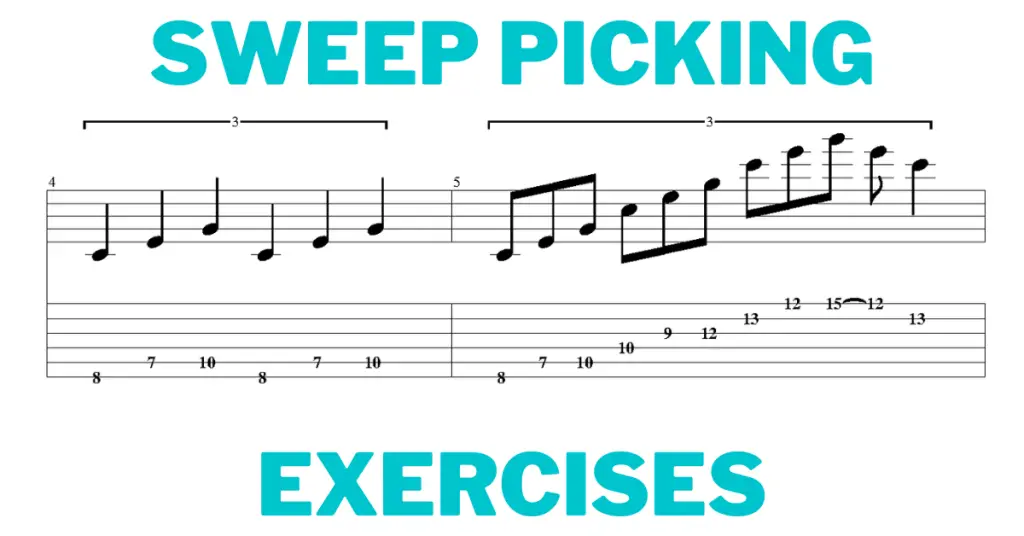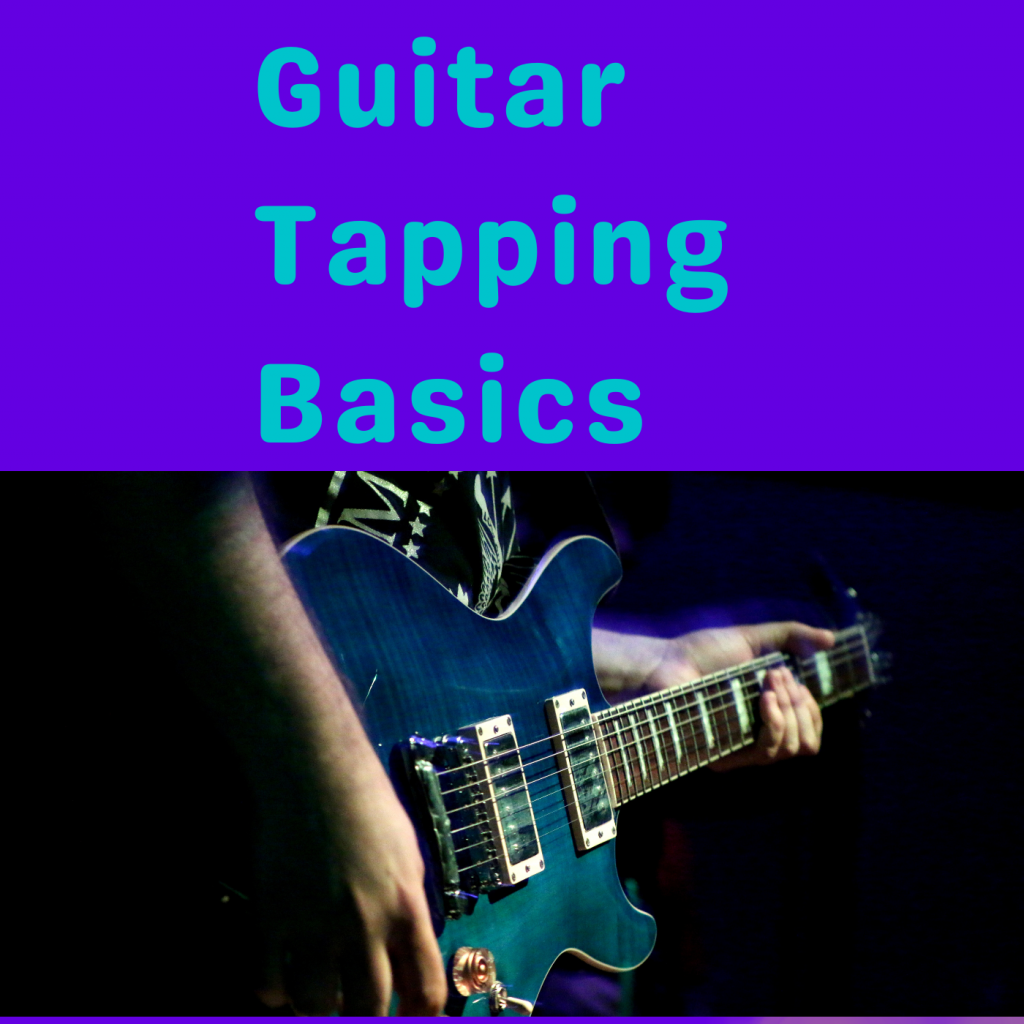Looking to shred? Then you’ve come to the right place.
Theses sweep picking exercises will help you further develop your existing sweep picking technique and expand your arpeggio repertoire.
And no matter what genre of music you play, these sweep picking exercises and arpeggio shapes will apply to you.
Table of Contents
Quick intro to sweep picking exercises
To learn these sweep picking exercises you’ll need to understand the basics of two things: how to sweep pick and arpeggios.
They each require a lesson of their own, so here they are:
Some of the exercises in the “learn how to sweep” lesson are in this lesson as well.
Simple best practices for sweep picking exercises
Some simple best practices for sweeping are:
- Single motions with the picking hand
- Notes are played individually, and not harmonized
- You want to practice in time
Sweep Picking Exercise 1: Sweep warmup | downstrokes and upstrokes
For your first sweep picking exercise you’ll focus on the synchronization of the left and right hands using both downward and upward sweeping motions.
As you pick in either direction, make sure that none of the notes ring together. If the notes are harmonized, then it won’t sound like a sweep. It will instead sound like a strummed chord.
This exercise is easy and beginner friendly due to the simple left-hand shape. It makes a staircase shape playing the G string with your ring finger, B string with your middle finger, and high E string with your index finger.
As you’re playing through both shapes, make sure you’re actually “sweeping” through the strings, and not picking each note string with its own motion.
Sweeping is a single motion, akin to strumming.

Sweep Picking Exercise 2: Coordination and primary motions
This exercise is key to good sweep picking, because this is where you’ll develop the primary motions necessary for sweep picking.
Altogether, you’ll need to remember 6 pickstrokes:
- Down
- Down
- Down
- Up
- Pull-off
- Up
Mastering this sweep picking framework will make it easy to learn every single sweep picking shape and exercise moving forward.
As you practice this sweep picking motion, make sure you pay attention the the right hand at all times!
The right hand is key to sweeping. Once you have the right hand technique down, the rest of the sweep picking battle is just memorizing arpeggio shapes.
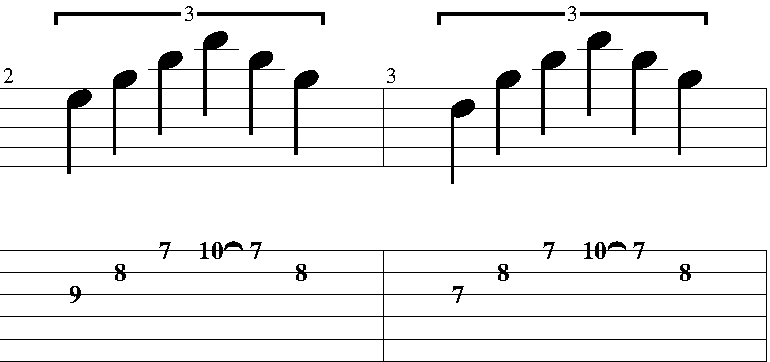
Sweep Picking Exercise 3: Combining major and minor arpeggios
Here’s another 3-string sweep picking exercise moving from a G major arpeggio to an E minor arpeggio.
This uses the exact same sweep picking framework as the last exercise.
Pay attention to the triplet rhythm in both this exercise and the last exercise. Practice them to a metronome to really nail the rhythm.
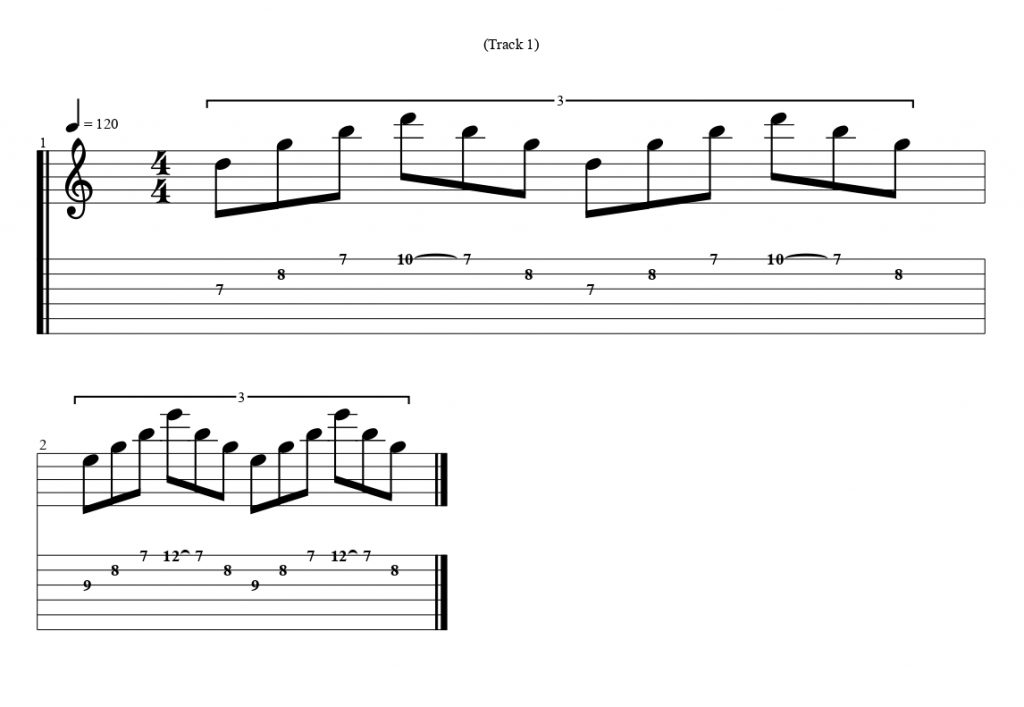
Sweep Picking Exercise 4: 2-String sweep picking
For some reason there aren’t a ton of resources for 2-string sweep picking exercises on the web, which is dumb, because they’re some of the easiest sweeps to play and memorize!
Good news though, I’ve got your back.
This is a 2-string C major arpeggio shape.
This sweep has 3 total motions:
- Down
- Down
- Up
As you play the upstroke (the 3rd step), it positions your picking hand above the low E string to start over with a downstroke.
This creates a rotating sweeping motion, and is an absolute blast to practice!
Alternatively, if it’s too difficult to conquer that upstroke, you could play the 3rd note in the arpeggio using a hammer-on.
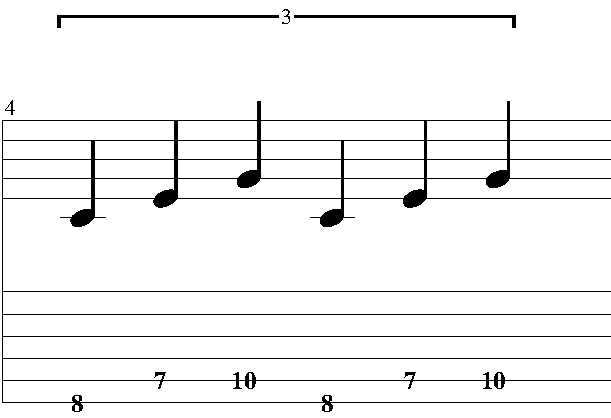
Sweep Picking Exercise 5: Sweeping in octaves
This is the same arpeggio from the last example, but it keeps moving up in octaves.
You’ll use the same sweep picking motions from before, but this time you won’t position your right hand above the low E string after the 3rd picking motion.
Instead, you’ll have to position your hand in the downstroke position to start on the next set of 2 strings.
With all this being said, don’t think too hard about it. Just stick to the motions we talked about in the previous exercise, and don’t steer away from them.
And if you want to learn more about moving around in octaves, then check out this lesson.

Sweep Picking Exercise 6: Diminished arpeggio sextuplets
If you don’t know about diminished chords, you can learn them here.
Diminished arpeggios are key tension builders in any genre. This particular style of diminished arpeggios, however, was made popular by neoclassical metal guitarists such as Yngwie Malmsteen and Jason Becker.
What’s great about diminished arpeggios is the fact that they can move up in minor 3rds (3 frets), and keep the same shape!
This is shown here by moving the same shape from the 6th fret of the G string to the 9th fret.
You can continue pushing forward if you want, moving to frets 12, 15, 18, etc.
As for the sweeping motions, it will use the same picking movements from the earlier 3-string sweep picking exercises.

Sweep Picking Exercise 7: 16th note diminished arpeggios | Adding a hammer-on
This is just like the previous diminished exercise, but instead of sextuplets you’ll use 16th notes.
We get this additional note by turning each arpeggio shape into a group of 8 notes, rather than groupings of 6 notes.
To do this you’ll have to add a hammer-on to your sweep picking shape!
Hammer-ons are common in sweep picking, and make it easier to add extra notes to your arpeggio shapes.
To play it, you’ll use the same sweeping motions you’ve been using, but you’ll use a hammer-on after your first pick stroke, rather than moving to the next string right away.
You’ll slide into the 2nd shape using your index finger, and then proceed to use the same sweeping pattern from the first shape.

Sweep Picking Exercise 8: Intro to economy picking
If you’re going to learn sweep picking exercises, it’s important to understand economy picking as well.
Sweeping follows the economy of motion across multiple strings using 1 note at a time, and is a sub-technique of economy picking.
With economy picking, you’re incorporating sweep picking into everything you do. Anytime you move from one string to the next, when you’re using odd note or hammer-on sequences in particular, you’ll move to the new string using the same picking motion that you ended with on the previous string.
In this example, taken from this post, you’ll use a sweep picking motion to move from the 7th fret D to the 10th fret A. This is done using upstrokes, as shown by the “U” symbols.
Everything else is played with a downstroke and a hammer-on, which can be thought of as:
D-H.O
This is just an introductory example for incorporating sweeping into phrases that aren’t consistently “sweeping” up and down the strings.
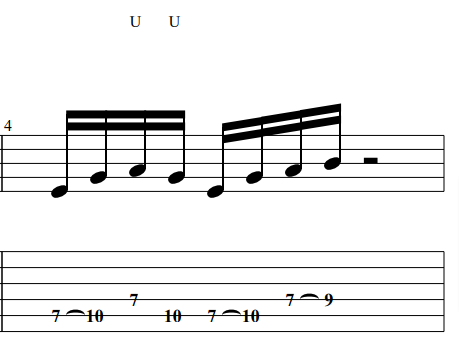
Sweep Picking Exercise 9: 4-string major arpeggios
4-string major arpeggios are just your CAGED shapes broken down into 4-string shapes.
If you want to visualize these arpeggios and the other sweep picking arpeggios using simple diagrams, then this lesson on sweep picking arpeggio shapes will help you out!
4-string sweep picking exercises and shapes use the same sweeping motion as the 3-string shapes but now have an additional string.
To increase coordination, make sure you practice each arpeggio shape by itself, before you attempt to sweep it.
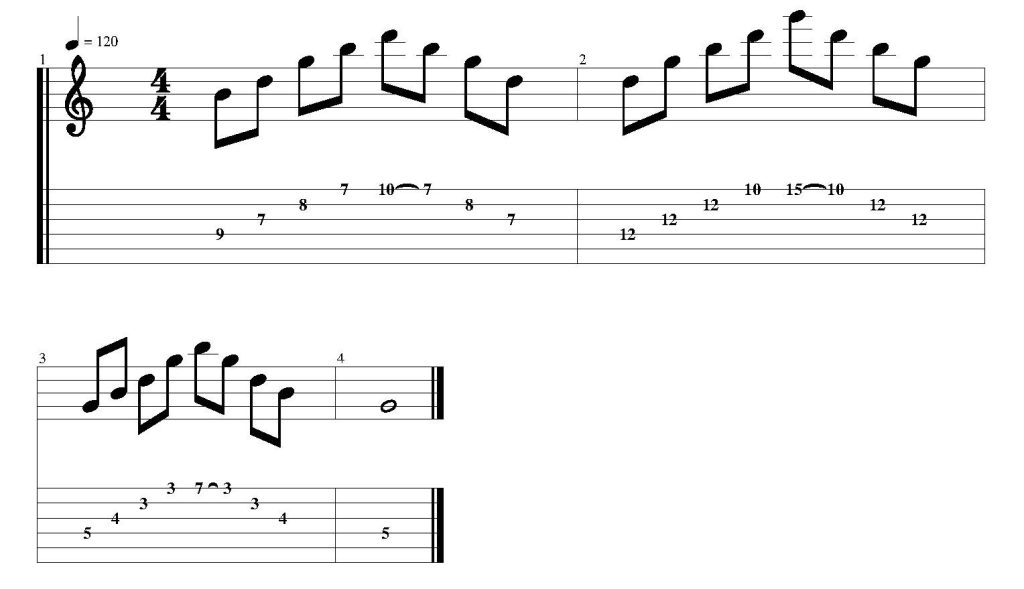
Sweep Picking Exercise 10: 4-string minor arpeggios
The 4-string minor arpeggios are just like the major arpeggio shapes, but with a flattened 3rd!
Take note of where the flattened 3rd is, as it will make it easier to memorize your major and minor arpeggios and sweep picking exercises.
On top of that, it will also help your ear develop a sense of difference between major and minor sounds.
Lastly, to make things easier, this exercise and the last exercise both use the same root note, G, for all three 4-string arpeggio shapes.
Don’t know where G is? Then you better memorize the fretboard notes!
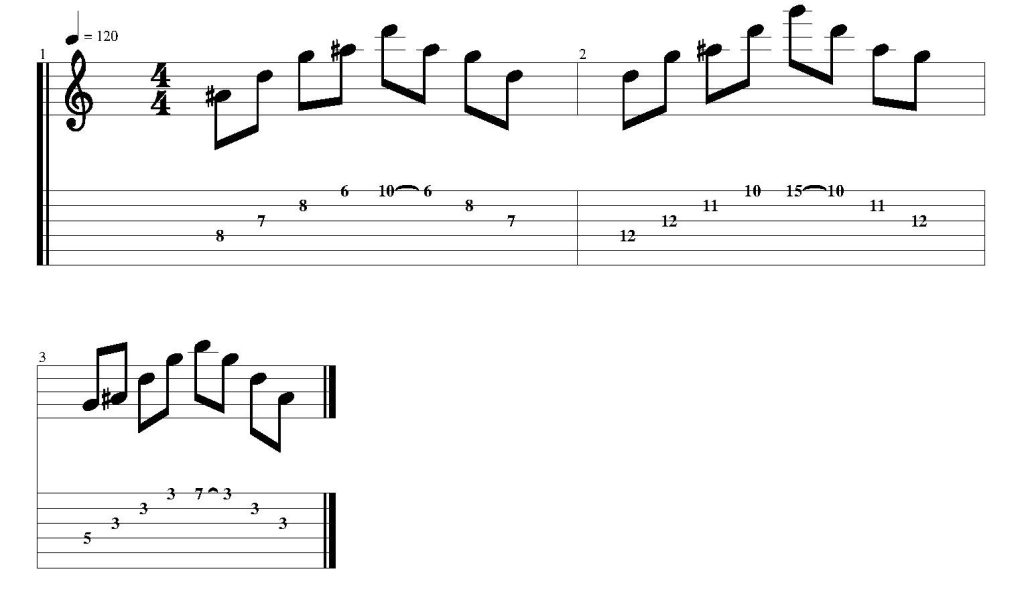
Sweep Picking Exercise 11: 5-string major arpeggios
These are the two most common 5-string major arpeggio sweep picking patterns.
As long as you’ve been paying attention to the motions of your right hand, and the left-hand arpeggio shapes, then these new shapes won’t be too hard because they only add a couple of new notes!
The second shape in this exercise does incorporate a hammer-on, but it works the same way as the hammer-on pattern from the earlier hammer-on exercise.

Sweep Picking Exercise 12: 5-string minor arpeggios
Once again, these 5-string minor arpeggios are just like the previous arpeggio shapes, but have a flattened 3rd.
As long as you got down the previous sweep picking exercises, this one will be no problem!
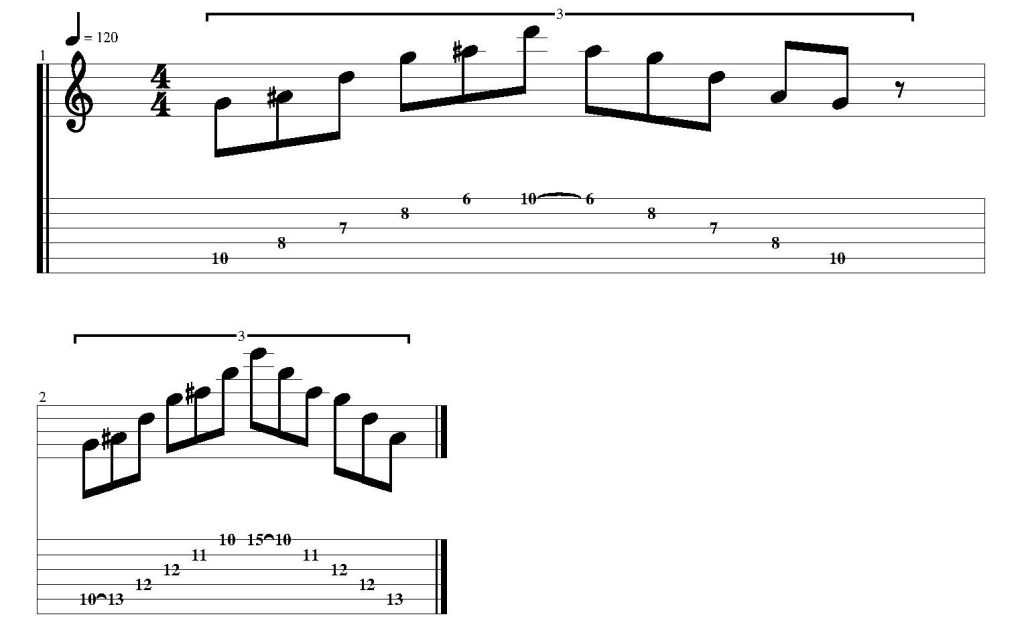
Sweep Picking Exercise 13: 6-string major arpeggio
6-string arpeggios are monstrous, and they’re quite extensive.
This 6-string major arpeggio builds off one of the 4-string arpeggios you learned earlier but adds 3 more low notes to that shape.
This makes for a huge shape with 15 notes, and a hammer-on from the start.
Here’s what your sweeping motions need to look like, step-by-step:
- On the low E, pick Down, then hammer-on
- Do a downward sweep For strings A to high e
- Pick upward on the 7th fret of high e, then pull-off to the 3rd fret
- Because of your previous upstroke, your hand is now positioned to do 5 more upstrokes, from the B string to the 7th fret of low E
- End with a pull-off to the 3rd fret of low E. You can also play that note with a downstroke if you want to restart the sweeping.
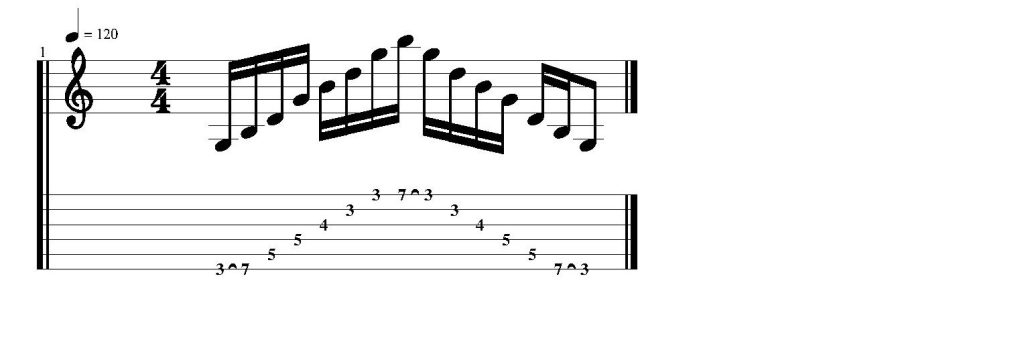
Sweep Picking Exercise 14: 6-string minor arpeggio
The 6-string minor arpeggio shape uses a boatload of barring, so hopefully you’re prepared for that.
As with all previous major and minor arpeggio shapes, compare this 6-string shape to your 6-string major arpeggio shape, and take note of where the major 3rd becomes a minor 3rd.
This exercise uses the same set of picking motions from the previous 6-string exercise.

Sweep Picking Exercise 15: Sweep tapping technique
Sweep tapping is one of our more advanced sweep picking exercises, seeing that it combines two techniques that are already difficult on their own.
But playing guitar wouldn’t be fun if there was no challenge, right?
Anyways, in order to play this exercise you’ll need to know how to tap.
This example used the same 5-string minor arpeggio you used earlier, but it incorporates the next highest note in the arpeggio, the 18th fret of the high E string.
To play this tapped note, you’ll perform the typical downward sweeping motion, and when you get to the high E string everything will be played using hammer-ons and pull-offs.
On the high E string, the hammer-on from fret 10 to fret 15 gives your right-hand time to slide onto the fretboard and tap the 18th fret. From there , everything else is sweep picking as usual!
Turnaround with the tapped pull-off from fret 18 to 15, then a normal pull-off from fret 15 to 10, then descend with your standard upward sweeping motion.
You can sweep tap anywhere by finding the next highest note in an arpeggio shape and tapping it.

Sweep picking exercises PDF
Sweep picking exercises audio
What’s next?
Now that you’ve learned some common sweep picking exercises you can move onto more techniques and exercises.
If you wish to further understand sweep picking and its applications, then learn these economy picking exercises.
If you wish to understand techniques better as a whole, then check out this post explaining guitar techniques.
Lastly, keep practicing, and don’t forget to follow the best practices for sweep picking!

